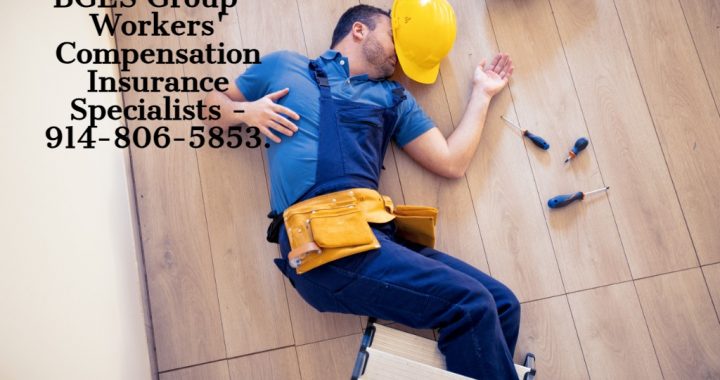Whether you are a general contractor, subcontractor, or general industry employer hiring a contractor to do work, you will almost certainly have some responsibility for identifying hazards and communicating to employees the safe practices, tools, and equipment needed to perform the job safely.
The employer and the contractor share an obligation to communicate planned work activities, the hazards involved, the contracted tasks, and the training, tools, and equipment that all employees will need.
Before agreeing to work with a contractor, review the following data that gives insight into their safety culture and performance:
- History of safety and environmental regulation violations.
- Injury and loss history.
- Total Recordable Incident Rate.
- Experience modification rate (X-Mod).
- Job and task hazard analysis procedures and results.
- Written safety programs and policies.
Safety requirements
Ensure that you outline requirements in the work contract and contractor manuals so there is a communicated expectation of workplace safety. Topics to consider include:
- Company and contractor safety responsibility and emergency contact information.
- A description and the location of hazardous areas, equipment, materials, and tasks at the worksite.
- Safety programs that govern the safe work practices for the contracted job.
- The contractor or the employer must provide equipment, tools, and supplies.
- Personal protective equipment is required at the worksite and for job tasks.
- Contracted employees need training and certifications before conducting work.
- Reporting requirements and procedures for injuries, illnesses, hazards, and safety concerns.
- The expectation for a drug- and alcohol-free workplace.
Data shows that most serious work injuries in the field of construction are related to four general categories:
- Falls from heights
- Stuck or caught in between
- Struck by falling or flying objects
- Electrical hazards
Work around these hazards should typically be supervised or monitored by a competent person. Hazards related to the above factors can be found on most active construction sites.
Train your staff
Ensure that your employees are knowledgeable about the risks related to working around these hazards by creating or utilizing training resources that include the following topics:
- Lockout/tagout procedures for equipment on-site.
- A list of permit-required and non-permit-required confined spaces on-site.
- Heat illness prevention procedures.
- Trenching and excavation procedures and the location of utilities.
- A list of chemicals used on-site and access to safety data sheets.
- Areas where fall protection is required.
- Vehicle, driving, and traffic safety rules for the work site.
- Good housekeeping methods.
- Worksite safety inspection processes and frequency of inspections.
- Worksite security procedures.
- Personal conduct requirements.
Training is essential to familiarize employees with controlling job hazards and preventing injuries. Suggested initial and ongoing training topics include:
- A worksite safety orientation, including a discussion of the hazards associated with the tasks of the job to be performed.
- The contents of contractor safety manuals.
- Pre-job briefings and shift meetings.
- Safety tailgate topics specific to the work site and job tasks.
- Training that is required to control a hazard, condition, or behavior.
Emergency procedures
Ensure that you train general contractors on the worksite-specific emergency procedures and equipment.
Knowledgeable employees and contractors can cooperate and make fast, quality decisions if prepared before an emergency occurs. The following topics and procedures, at a minimum, should be provided to employees and contractors:
- Fire prevention and evacuation plans.
- Emergency spill response and procedures.
- Exit routes and assembly areas for emergency evacuations.
- The location of emergency equipment such as fire extinguishers, first aid kits, and rescue equipment.
- Emergency contacts and communication methods.
- Rescue and medical duties for those employees who are to perform them.
Establishing clear expectations, communication, training, and monitoring all help employers and contractors work together to complete their jobs safely while also protecting them.
BGES Group, located in Larchmont, N.Y. are New York Construction Insurance Specialists that represent 50+ companies and all the BEST general & umbrella liability programs! We offer every coverage you need including property, builders risk, inland marine, general liability, umbrella liability, auto, bid & performance bonds, workers’ compensation, N.Y.S. disability and group health. We are extremely responsive, responsible, trustworthy, fast, minimize your insurance headaches, we don’t charge ridiculous policy or service fees and when you call, text or email, whatever time of day, even weekends, we are there to help YOU!
BGES Group are Workers’ Compensation Insurance Specialists for Tri-State Business Owners: Unhappy with your rates, company, being canceled, losses causing difficulty getting coverage, in the middle of an audit dispute, payrolls misclassified, whatever your issue, we can help! We have special programs for: Auto Service, Contractors (especially New York), Limousine Services, Logistic Companies, Manufacturers, Recyclers, Truckers, we can help ANY tri-state business owner. We are considered “Preferred Agents” for this one program that if we can get you into their pricing is excellent, offers long-term coverage stability and can cover multi-state operations. Program takes the hassle out of doing annual audits too.
If you would like to speak with us call Gary Wallach at 914-806-5853 or click here to email or click here to visit our website.
Company: BGES Group, 216A Larchmont Acres West, Larchmont, NY 10538
e-mail: bgesgroup@gmail.com
website: http://www.bgesgroup.com
© – Copyright – 2024 – BGES Group
